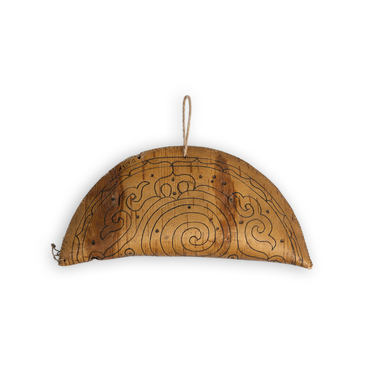The settlement and economic development of the Far East by East Slavic peoples began in the second half of the 19th century, after its incorporation into the Russian Empire under the Treaties of Aigun, Tianjin and Beijing. The East Slavic population of the Far East was formed by Russian, Ukrainian, and Belarusian immigrants from different governorates with their specific regional features.
After the serfdom was abolished, peasants who had little land had to go to faraway places. The journey of settlers was long and arduous, and leaving for uncharted lands, peasants tried to take with them a piece of their native home — simple everyday things. One of such items was a rushnik, a towel made of homespun canvas with an embroidered or woven pattern. The origin of the word is traced from the root “rush”, “ruh”. “Rush” is “to break, tear”, so “to tear off a cloth” means “to cut off”. A rushnik is a cut-off piece of cloth. The Krolevets rushnik, presented in the exhibition of the museum, was made in the early 20th century in the town of Krolevets, Chernigov Governorate, and was given to the museum in 1993 by M. M. Antonenko.
The rushnik is made of homespun cloth of white color. The whole field of the rushnik is divided by transverse stripes of red color, the space between the stripes is filled with plant geometrical patterns woven with red threads. The composition includes the image of geometrized heraldic double-headed eagles. The inscription “Krolevets” is woven on the edges.
The town of Krolevets was
founded in the early 17th century and named in honor of the Polish king
Sigismund III: most likely, the name of the town is related to the Polish word
krolewiec (“prince”) or krol (“king”), i.e. it means “royal town”. The town was
famous for its weavers. Krolewiec rushniks were particularly valued for their
combination of red and white colors. Red is the color of the sun, warmth,
beauty, and protection. The white color was associated with purity, goodness,
and light. Sometimes a rushnik was additionally decorated with ribbons and
lace. Despite the fact that folk traditions are passing away, the rushnik is
still used when decorating dwellings and ceremonies.


